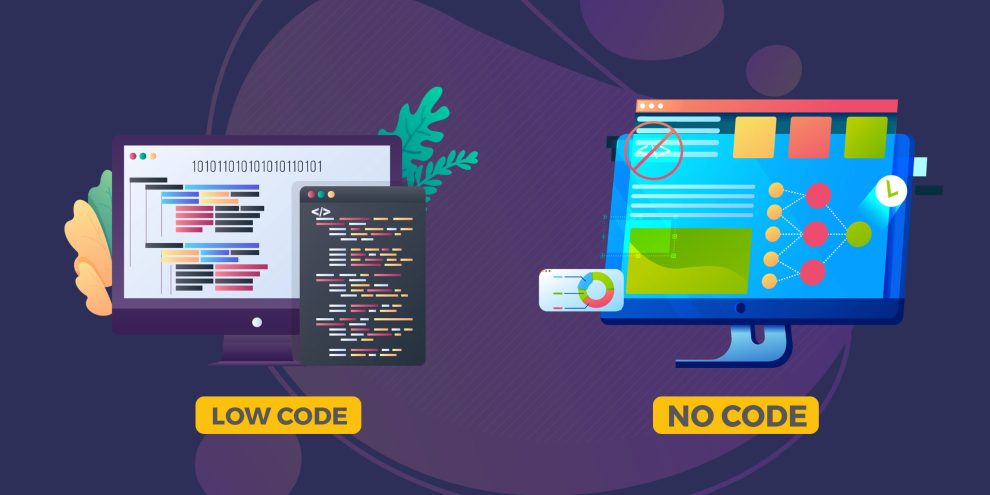The ability to develop custom software applications has long been confined to those with specialized programming skills. But that landscape is rapidly evolving as low-code/no-code (LCNC) platforms open app development capabilities to a much wider audience.
LCNC platforms feature intuitive, visual interfaces that allow users to build complete applications simply by assembling pre-made components. This approach essentially enables anyone to become a developer, regardless of technical background.
As organizations across industries embrace digital transformation, LCNC platforms provide faster, more accessible tools to meet evolving business demands. By 2025, Gartner predicts that 70% of new enterprise applications will leverage LCNC technologies.
In this post, we’ll explore how these innovative platforms are truly democratizing app development and empowering “citizen developers” across organizations.
Unlocking the Power of Low-Code/No-Code

Traditional app development relies on manual coding, requiring specialized programming languages and debugging skills. LCNC platforms abstract away these complexities through visual, drag-and-drop interfaces.
This approach lowers the barriers to entry for app development by hiding the underlying code, allowing users to focus on higher-level logic and integration. Key elements of LCNC platforms include:
- Pre-built components and templates
- Visual assembly of application logic
- Configuration over manual coding
- Connecting data sources via APIs
- Collaboration capabilities
Benefits of Low-Code/No-Code Development
LCNC technologies offer significant advantages over traditional coding across critical dimensions:
1. Accelerated Development
By eliminating the need for extensive coding, testing, and debugging, LCNC platforms massively speed up development cycles. Apps can be built 5-10x faster than traditional methods in some cases.
2. Enhanced Agility
The visual, configurable nature of LCNC lends itself well to iteration and experimentation. Features and workflows can be adjusted without rewriting underlying code, supporting more agile, adaptable development.
3. Increased Citizen Developer Empowerment
One of the most transformative aspects of LCNC is enabling non-technical users to participate in building solutions tailored to their needs. Subject matter experts across the business can create apps without intensive training.
4. Reduced IT Dependency
By empowering decentralized development, LCNC alleviates demand on central IT teams for routine projects. This enables IT to focus on more complex infrastructure and integration initiatives.
Wide-Ranging Applications of LCNC
The versatility of LCNC platforms makes them suitable for nearly any function that can be systematized into workflows or data transactions. Common use cases include:
Internal Business Applications
- Project management
- CRM and sales enablement
- HR onboarding and employee self-service
- Procurement/purchasing
- IT service desk
- Custom reporting/business intelligence
Customer-Facing Applications
- Account registration and login
- Product customization
- Shopping carts and checkout
- Self-service portals
- Appointment booking
- User profiling and segmentation
Process Automation
- Data collection and processing
- Approvals and notifications
- Document generation
- Integration across systems
And countless other scenarios limited only by the imagination. LCNC provides the toolkit – the business context drives the solutions.
The Future of Low-Code/No-Code
As digital transformation becomes an imperative across industries, demand for accessible development capabilities will rapidly accelerate LCNC adoption.
Key drivers fueling this trend include:
Digital Transformation Mandate
COVID-19 profoundly highlighted the need for robust digital presence and capabilities. LCNC democratizes critical app development skills across organizations.
Persistent Developer Shortage
Even before the pandemic, insufficient developer capacity throttled digital initiatives for many enterprises. LCNC alleviates this bottleneck through skill set expansion.
Maturing Platform Capabilities
Early LCNC tools were somewhat limited in scope and sophistication. But rapid innovation has yielded incredibly capable tools rivaling custom code – a trend that will continue.
As LCNC platforms evolve, development will be delegated to wider audiences, fostering a more responsive, innovative culture tailored to evolving on-the-ground needs rather than top-down directives.
This democratization will unlock new ways of digitally engaging customers, employees, and business processes – making LCNC one of the most disruptive enterprise software trends of the decade.
















Add Comment